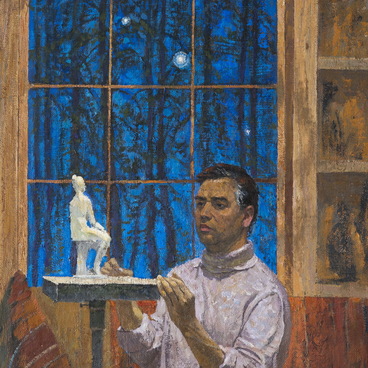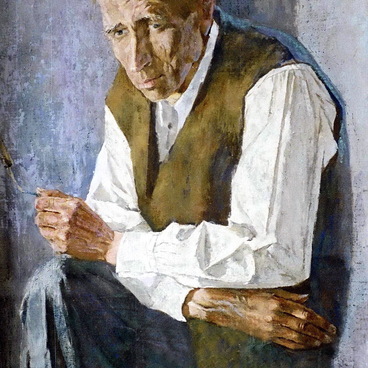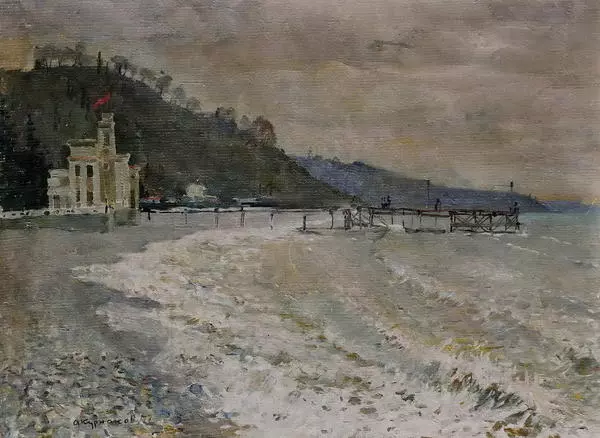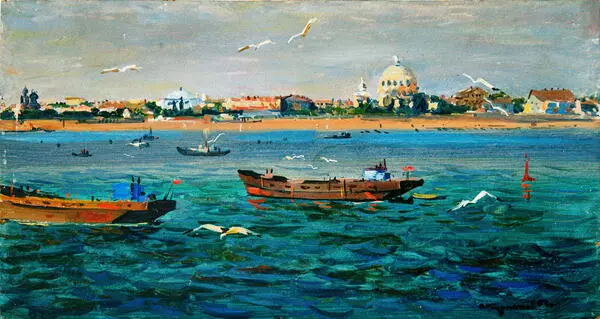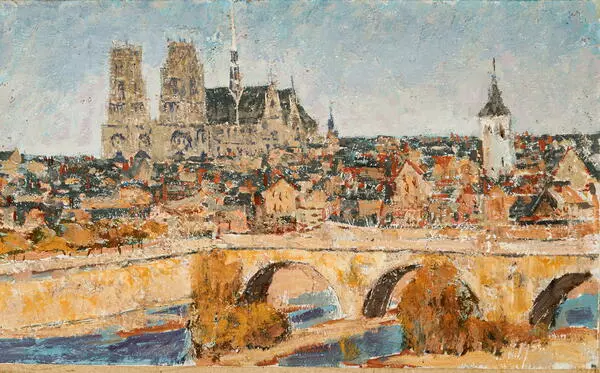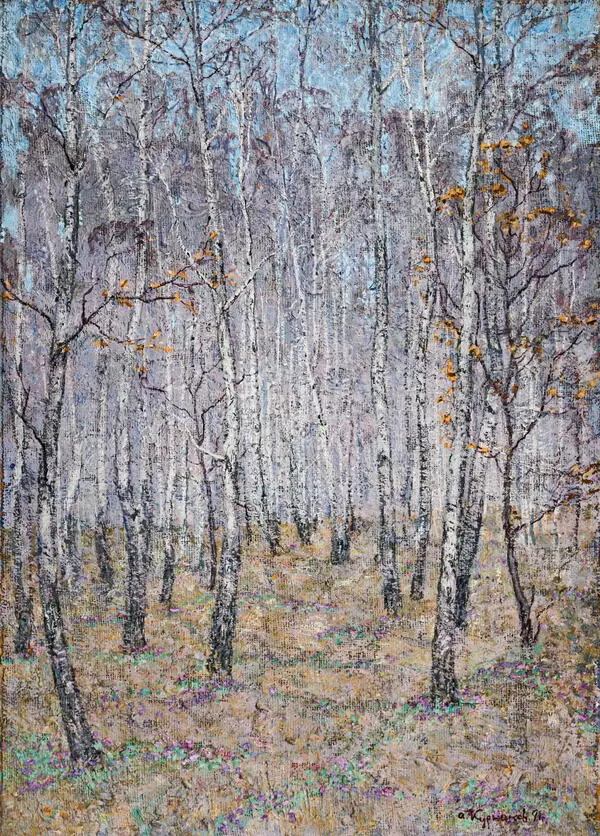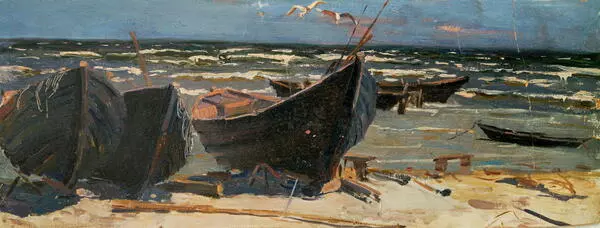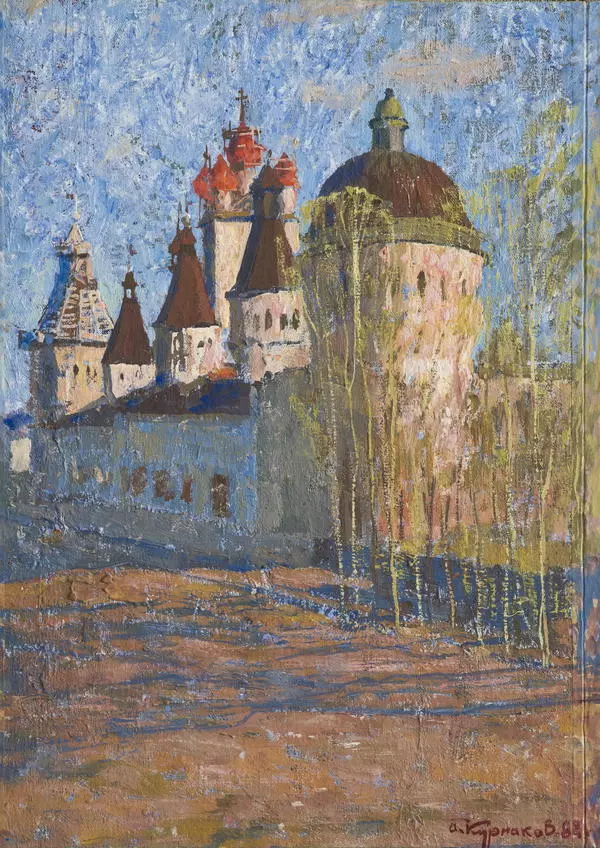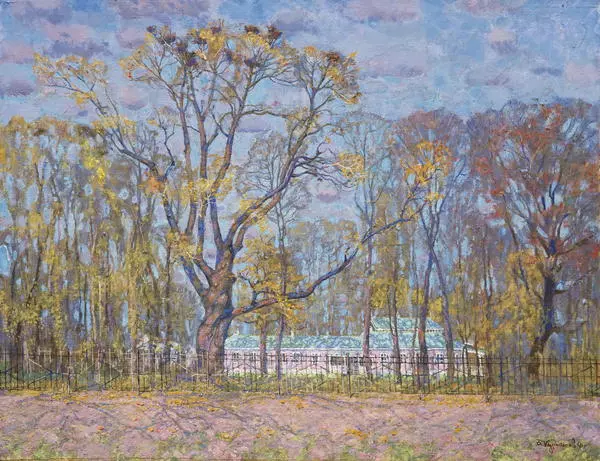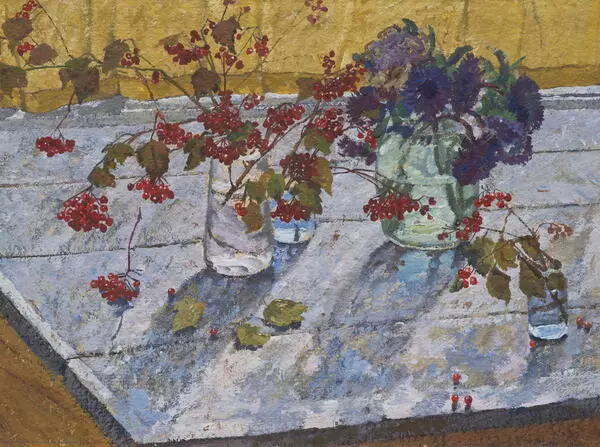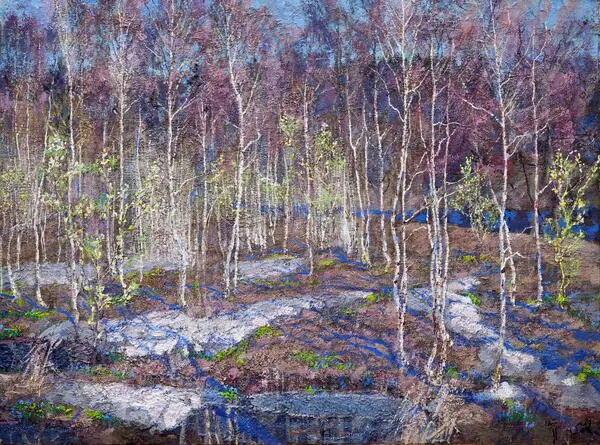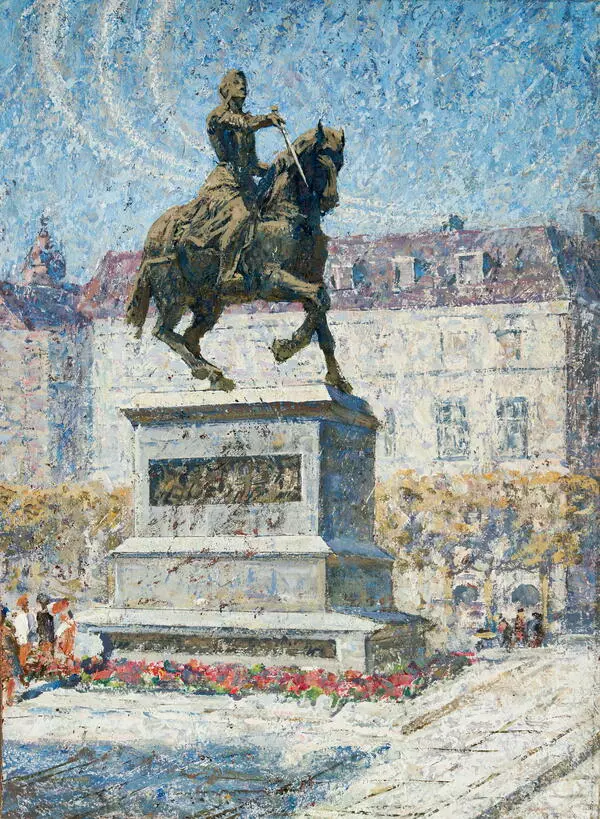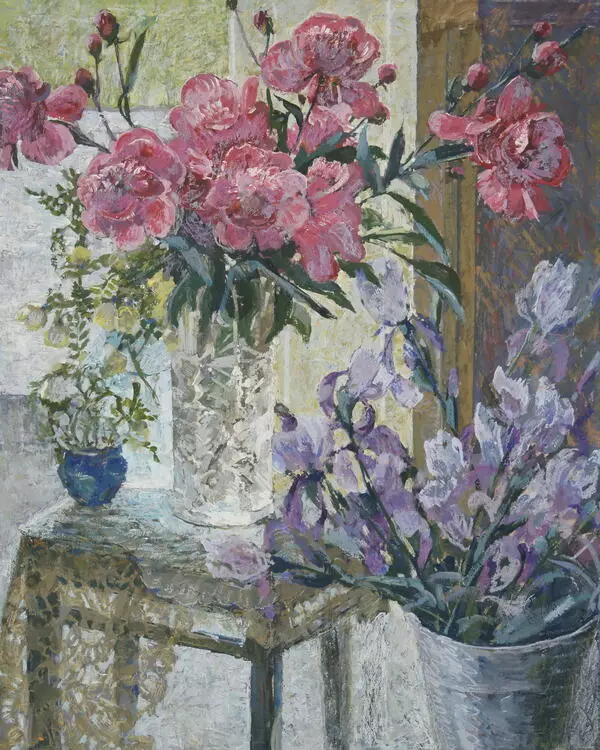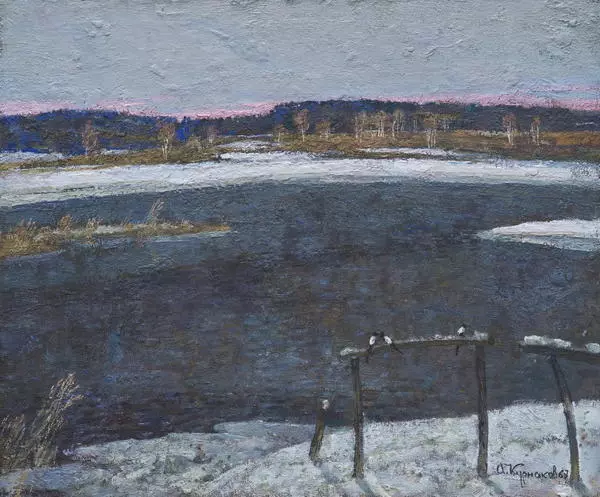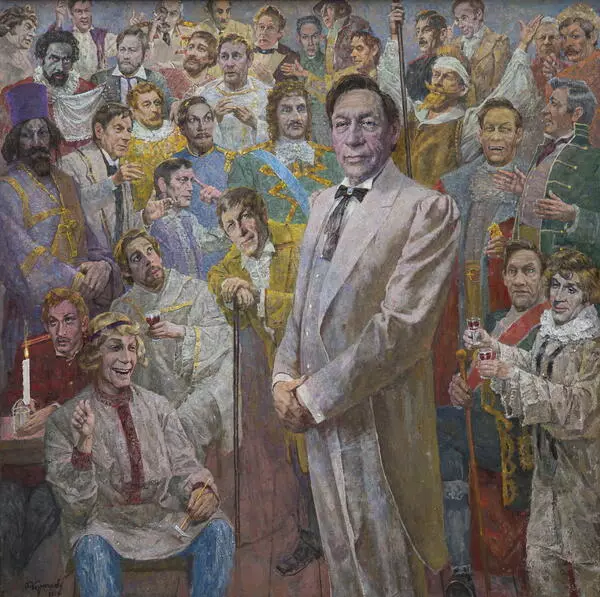This painter’s biography deserves a specific story. Vyacheslav Pavlovich Tretyakov was born in the town of Maloarkhangelsk, Oryol province. His father, Pavel Mikhailovich, had a personal nobility, was a provincial secretary, a member of the district city duma, a public figure, which later pinned the blame on his son for many years. In 1912 after graduating from high school, Vyacheslav Pavlovich entered the Kiev Art School, where he was educated under the guidance of the famous artist Nikolai Ivanovich Strunnikov. Then he moved to Oryol, where he lived until the end of his days. He taught, was a commissioner of the USSR art fund in the Oryol region, a member of the art council of the department of the Union of Artists. Among his relatives were well-known representatives of ancient noble families, scientists, curator of the manuscript department of the Rumyantsev Museum library, his second cousin was Zinaida Reich, the wife of Sergei Yesenin.
His talented student treated his teacher with deep respect. Vyacheslav Pavlovich was the head of Andrei Ilyich Kurnakov’s diploma work on the design of A.S. Dargomyzhsky’s opera “Mermaid”. The artist recalled his teacher with extraordinary warmth: “Modest, laconic, he possessed great knowledge in the history of art, theater, was a great adherent of the artists of “Mir Iskusstva” (“The World of Art) magazine. Vyacheslav Pavlovich worked more as a book graphic artist, painted small genre paintings, landscapes, and sometimes portraits in oil. But everything he did was distinguished by some special artistic taste. Tretyakov could unmistakably distinguish the artistic from the anti-artistic in architecture, in book illustrations, in a ceramic vase, and was able to prove this very convincingly and clearly. He was able to develop an artistic taste in his students. I”ve learned these lessons for life, they irrevocably help in my work to this day”.
The artist depicted his teacher sitting comfortably in an armchair against the background of a light wall with greenish reflections. He is calm, his hands resting freely on his knees, abut on the red armrests. He is wearing blue trousers, a brown jacket and a light shirt. Vyacheslav Pavlovich looks us straight in the eyes. His gaze through round glasses in light metal frames is serious and attentive, slightly ironic. He seems to be listening to us, analyzing, studying, making up his own opinion.
Andrei Ilyich Kurnakov painted the portrait with a wide brush, pastose, free, thus giving volume to the image. Azure, blue, ocher tones animate the portrait, making it optimistic and vital.
His talented student treated his teacher with deep respect. Vyacheslav Pavlovich was the head of Andrei Ilyich Kurnakov’s diploma work on the design of A.S. Dargomyzhsky’s opera “Mermaid”. The artist recalled his teacher with extraordinary warmth: “Modest, laconic, he possessed great knowledge in the history of art, theater, was a great adherent of the artists of “Mir Iskusstva” (“The World of Art) magazine. Vyacheslav Pavlovich worked more as a book graphic artist, painted small genre paintings, landscapes, and sometimes portraits in oil. But everything he did was distinguished by some special artistic taste. Tretyakov could unmistakably distinguish the artistic from the anti-artistic in architecture, in book illustrations, in a ceramic vase, and was able to prove this very convincingly and clearly. He was able to develop an artistic taste in his students. I”ve learned these lessons for life, they irrevocably help in my work to this day”.
The artist depicted his teacher sitting comfortably in an armchair against the background of a light wall with greenish reflections. He is calm, his hands resting freely on his knees, abut on the red armrests. He is wearing blue trousers, a brown jacket and a light shirt. Vyacheslav Pavlovich looks us straight in the eyes. His gaze through round glasses in light metal frames is serious and attentive, slightly ironic. He seems to be listening to us, analyzing, studying, making up his own opinion.
Andrei Ilyich Kurnakov painted the portrait with a wide brush, pastose, free, thus giving volume to the image. Azure, blue, ocher tones animate the portrait, making it optimistic and vital.
